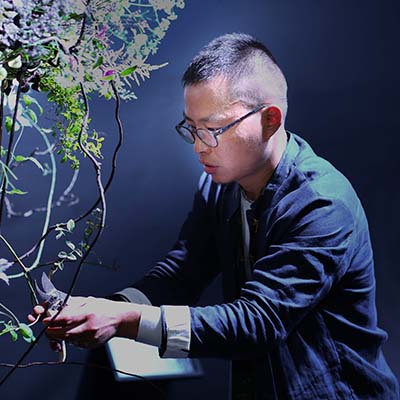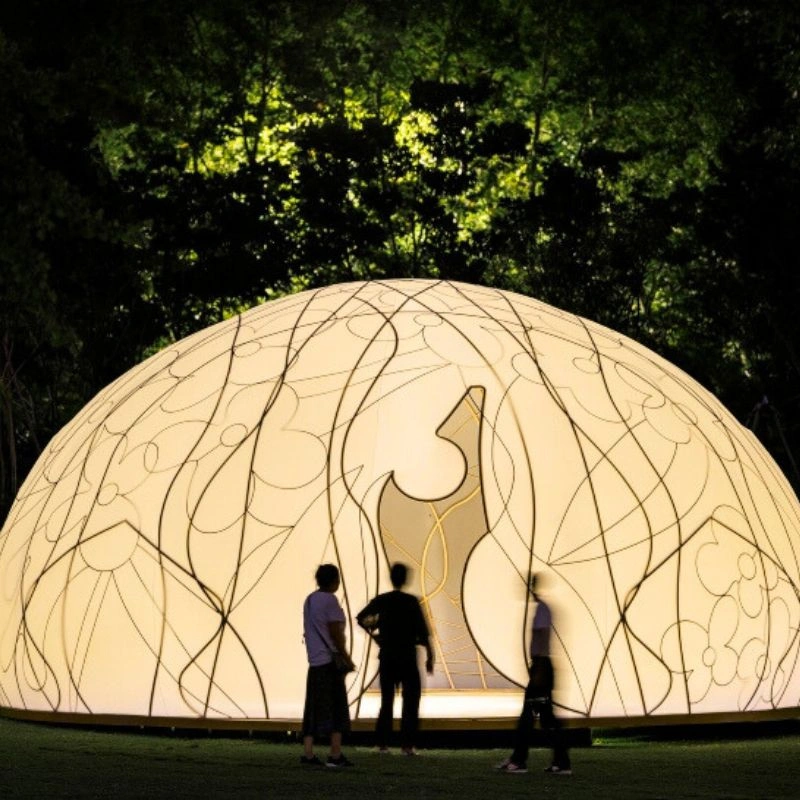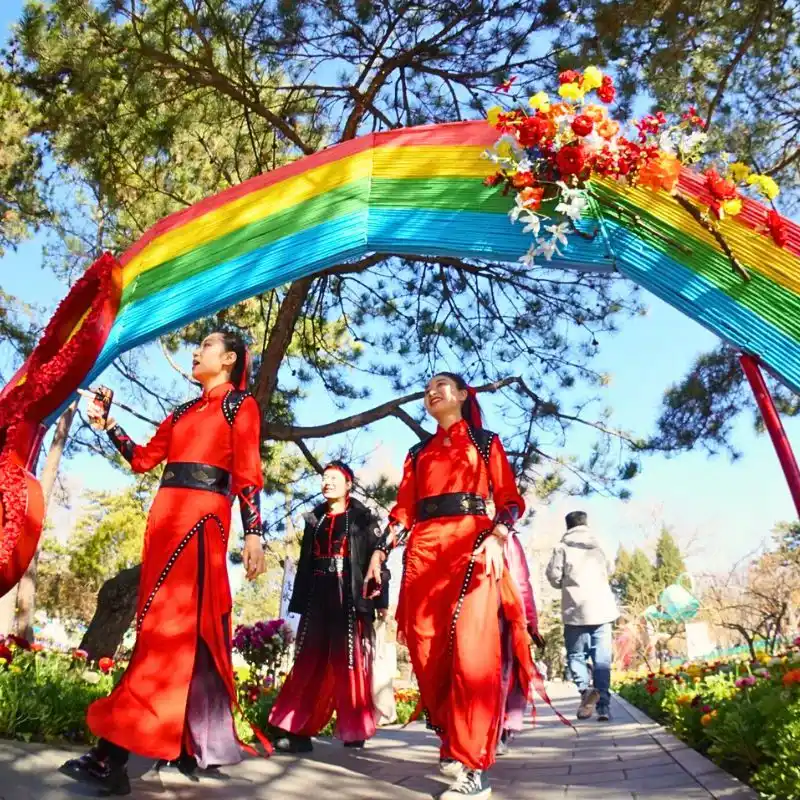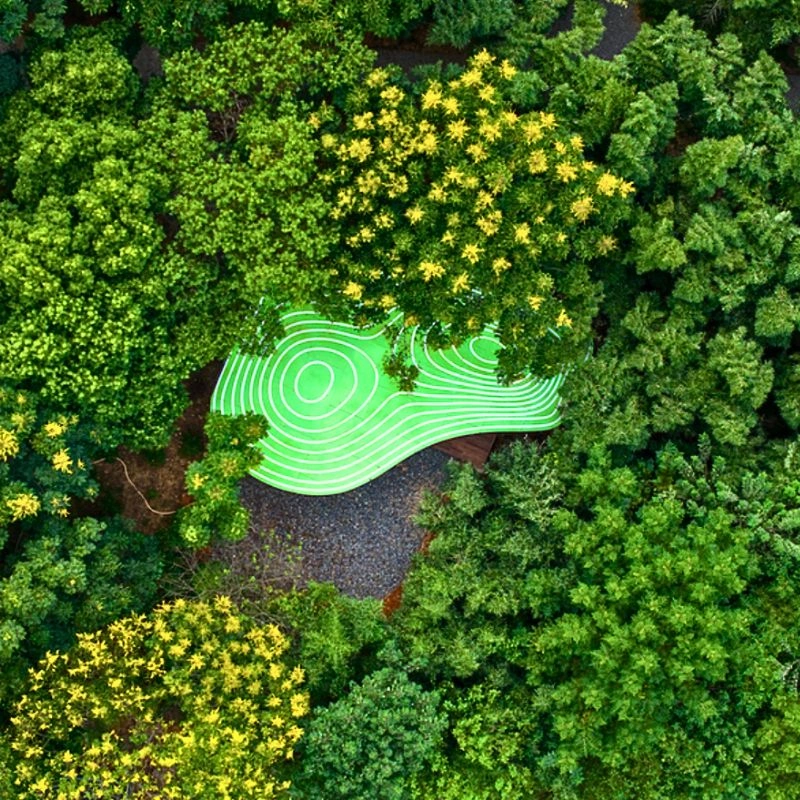Oriental flower arrangement originated in China, with a documented history of over 2,000 years. Through the form of floral arrangements and the characteristics of the flowers, the artist conveys inner thoughts, creating a wordless dialogue between the work and the viewer. The expressive depth of Chinese flower arrangement is fascinating. For example, a single autumn leaf in a piece tells us that autumn has arrived—we often say "one leaf reveals autumn." A single red berry signifies winter and the approaching Spring Festival.
Expressing Grandeur Through Subtlety
We Chinese are immersed in our philosophical culture from childhood, which is why our works tend to be minimalist. We advocate expressing grandeur through subtlety and achieving more with less.

For instance, when I participated in the World Cup recently, my design went against my own principles. The World Cup floral competition requires plant materials to make up at least two-thirds of the arrangement, whereas the Chinese perception of beauty emphasizes leaving at least two-thirds of the space blank. However, I respected the rules of the competition and filled my design abundantly with plant materials. If, during the World Cup floral competition, there could be an additional exhibition area for each country to display their works, allowing pieces from different cultures to be showcased simultaneously, it would be incredibly meaningful and remarkable.

Years ago, I was deeply impressed by European floral designs. They love combining flowers of different colors, much like their beautiful oil paintings. Later, I noticed they advocate for a natural style in global floral art, particularly designs that mimic plant growth, which I fully agree with. However, I believe nature is not only about flowers being the most beautiful. Without seeds, there are no leaves; without leaves, there are no flowers. Every stage of life deserves respect. Therefore, I often use buds, leaves, flowers, branches, and fruits in my designs to document the growth process of life, using plants at different life stages to depict the ever-renewing world of flora.

I think the plant growth design concept proposed by Europeans is excellent, but I feel it might be easier for advanced designers to learn, while beginners could find it challenging. Inspired by this, I developed a 细分 (detailed categorization) in my Oriental Plant Growth Design system, including aquatic plant design, parasitic plant design, rock plant design, and tropical plant growth design, with plants classified accordingly. Aquatic plant designs must use plants from watersides or underwater; pastoral plant designs must use sun-loving field plants. I also incorporate seasonal divisions. For example, Chrysanthemums, being autumn flowers, should not appear in the same arrangement as spring tulips. Similarly, Phalaenopsis orchids are tropical flowers, and since the tropics have no autumn or winter, they should not be combined with autumn leaves or winter red berries in one piece.

Lines Are the Lifeline of Chinese Art
Chinese culture views time and seasons as fluid, and everything in the world as in constant motion. Hence, we use various lines in our designs. The thick end of a line represents the beginning, while the thin end symbolizes an infinitely extending future. Lines are the lifeline of Chinese art; without them, a piece is incomplete. We particularly favor curved lines because they convey humility and harmlessness, much like how European car manufacturers adapt to Chinese preferences by designing 车身轮廓 (body contours) with curved lines. Our 'Oriental Plant Design' theory emphasizes principled design—why a certain approach creates beauty and why diverging from it does not. Three-dimensional composition is the foundation of our teaching, moving beyond mere manual frameworks. In teaching, it’s not about instructors designing arbitrarily with students merely 模仿 (imitating) without understanding the principles. Not knowing the "why" is detrimental, hindering the progress of floral design and wasting students' time. Chinese culture values reasoning, and when faced with 不合理 (unreasonable) people or situations, we proactively engage in dialogue. Regional Chinese culture forms the basis of Chinese floral theory.
We pay special attention to whether flowers appear as if they are growing naturally within the framework. We need not only the colors of the flowers but also an understanding of how plants grow in nature. Through flowers, we should see sunlight, wind, and rain. It’s about expressing the natural growth patterns of plants while showcasing their most 观赏 (appreciable) aspects to the audience. This respects both the plants and the viewers and requires prolonged observation. For example, during the World Cup floral competition, I noticed many lacked sufficient observation of plants, resulting in flowers appearing lifeless and listless in their arrangements. Future floral designs must not merely exploit the colors of flowers. Practitioners should respect the plants in their hands, as every flower in a design is a reflection of themselves.

Discover and Explore
The joy of floral design lies in discovery and exploration. Like in 2015, when I participated in the World Cup in Germany, I extensively used wild 小花小草 (small wild flowers and grasses). I found these delicate wild flowers blooming freely under the rural sunlight, dancing gracefully in the wind. Though ordinary, they were utterly free, deeply moving me. Away from urban chaos, weren’t they embodying the freedom that city dwellers crave inwardly?
This past April, during the Chinese national selection competition and again at this World Cup, I experimented with 大量 (a wealth of) tropical plants in my designs. This exploration captivated me, and upon completion, it felt as though every element was smiling at the audience. It was one of my most beautiful experiences.
Finally, I extend my blessings to everyone involved in the World Cup floral competition. Your hard work made this successful event possible. 特别祝福 (Special congratulations) to the winners, as 荣誉 (honor) comes with arduous effort. May we all continue to strive together to make the world a more beautiful place!

Ni Zhixiang, China











